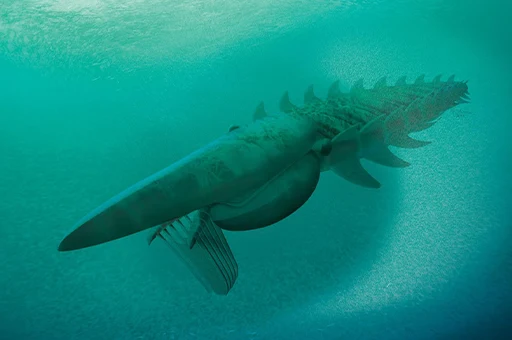
The Evolution of Lobsters
Lobsters are a peculiar and fascinating species that have captured the hearts and stomachs of people worldwide. Specifically, Homarus americanus, more commonly known as the American lobster, has gained particular fame in part because of the incomparable Maine lobster industry and hardworking lobstermen that harvest the tasty and fascinating species. Let’s take a deep dive into the evolution of the American lobster and explore the intriguing dynamics of this species.

Image courtesy of https://www.stonesbones.com/, purveyors of museum quality fossils.
Imagine being a lobster millions of years ago, with no one to share your sea shanties with except the occasional trilobite. Trilobites were one of the earliest and most successful groups of arthropods, a category of animals that includes insects, spiders, and crustaceans like lobsters. (It must have been kind of lonely.) Arthropods and their lineage date back to the Paleozoic Era, around 350 million years ago (which is about 150 million years before the Jurassic era).
But, even further back, nearly 500 million years ago, anomalocaridids roamed. They were among the largest animals of their time, with some species reaching lengths of over seven-feet. Anomalocaridids had a segmented body and a pair of large, spiny appendages near their mouths, which they likely used to capture prey, similar to today’s lobster. Anomalocaridids are considered part of the arthropod family tree, which includes crustaceans like lobsters, but they are not direct ancestors of modern lobsters; they represent an early branch of arthropod evolution.
The evolutionary history of arthropods, including lobsters, is complex and involves various extinct groups. Modern lobsters belong to the class Malacostraca within the phylum Arthropoda. While anomalocaridids share some common ancestry with modern arthropods, lobsters and anomalocaridids diverged along different evolutionary paths.
The evolution of lobsters likely involved a series of transitions and speciation events over millions of years, with various extinct and extant arthropod groups contributing to the overall diversity and complexity of the lineage.

Image courtesy of https://www.stonesbones.com/, purveyors of museum quality fossils.
Homarus americanus, with its distinctive appearance and meaty claws, has come a long way since its humble aquatic beginnings. Here are some ways that lobsters have evolved and adapted over the many millions of years that they have existed:
- Lobsters are crustaceans, and their body structure has evolved to allow them to thrive in aquatic environments. They have a hard exoskeleton that protects them from predators and provides structural support. Their segmented bodies, with specialized appendages, help them move, capture prey, and defend themselves.
- Lobsters have developed well-adapted senses, such as sensitive chemoreceptors, which allow them to detect chemicals in the water, helping them locate food and potential mates. Their eyes are also well-suited for detecting movement and light in their underwater environment.
- Lobsters have evolved reproductive strategies to increase their chances of survival. They lay thousands of eggs, which are carried by the female in her tail.
- Lobsters have the remarkable ability to regenerate lost body parts, including limbs and even antennae. This adaptation helps them recover from injuries or predator attacks and improve their chances of survival.
- Lobsters exhibit a variety of social behaviors, including territoriality, dominance hierarchies, and signaling through chemical cues. These behaviors have evolved to help them avoid conflicts and maximize their access to resources and potential mates.
- Lobsters are known for their potential for long lifespans, with some individuals living for several decades, and scientists believe that lobsters can live to be up to 100 years old! This longevity is an adaptive trait that allows them to reproduce multiple times and increase their chances of passing on their genes to the next generation.
The Gulf of Maine, with its cold, nutrient-rich waters, has provided the perfect backdrop for the evolution and proliferation of Homarus americanus. Lobsters are known for their migrations, and the Gulf of Maine serves as their primary breeding ground. It’s the ideal place for lobsters to meet, greet, and mate.
Maine, known as the “Pine Tree State,” has established itself as the epicenter of lobster culture in the United States. Lobster fishing is not just a profession; it’s a way of life in Maine. With its picturesque coastline and charming lobster shacks, Maine is a lobster paradise.
The evolution of Homarus americanus in the Gulf of Maine has resulted in a cultural phenomenon that’s hard to resist. From Maine’s lobster-loving legacy to the peculiar and intriguing characteristics of the species itself, there’s more to lobsters than meets the eye. As you sit down to savor a succulent lobster dinner, remember the long and fascinating journey these crustaceans have taken to your plate. So, next time you crack open a lobster, you can appreciate not just the delicious meat but also the incredible history behind it.




